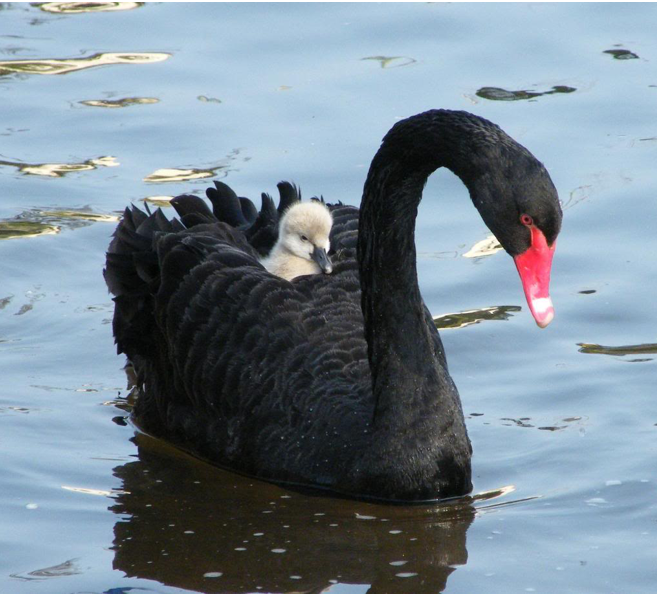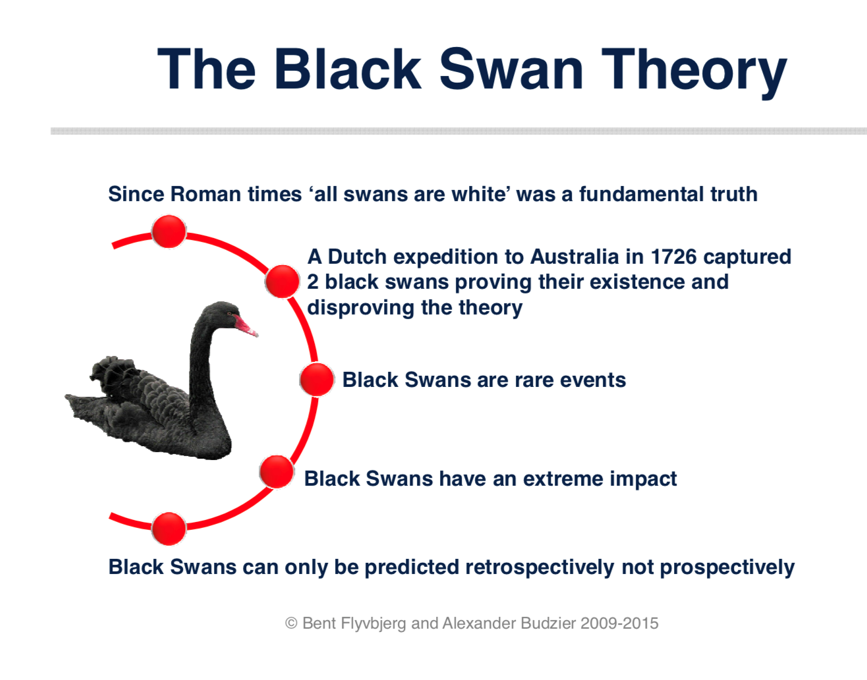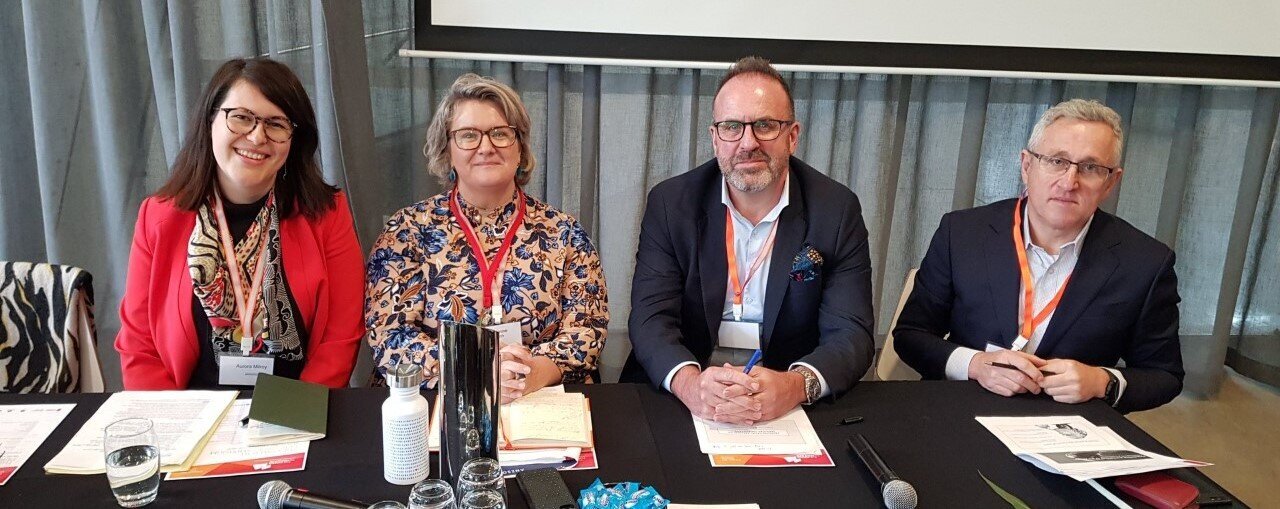Black Swans Make Better Policy
At the recently-held Power to Persuade Symposium, the talk given by Aurora Milroy (@AuroraMilroy) of ANZSOG (@ANZSOG) was a stand-out. Unfortunately, due to technical difficulties, her talk was not captured on film. We are therefore pleased to present a summary of her talk and her slides here. Aurora spoke of “black swan theory” which highlights the deficits of western knowledge and ways of working. Acknowledging and honouring the ‘black swans’ that Indigenous ways of being and knowing represent brings a more holistic understanding and can mend broken relationships, leading to better policy responses.
Indigenous ways of working
Europeans assumed all swans were white - a laughable presumption to Australia’s Indigenous population. Photo courtesy Aurora Milroy.
I am a Palyku woman from the Pilbara region of Western Australia, but I was born and raised on Noongar country in the state’s South-West. I grew up watching black swans gliding gracefully along the derbarl yerrigan. My mum taught history at the University of Western Australia, which is perched right on the glistening waters of the river. Most of what I know about black swans, including most of what is written here, I learnt from my mother, and the lectures I heard her preparing for.
I think of black swans as a symbol of Indigenous stewardship. When I came to Melbourne last year to work at the Australia and New Zealand School of Government (ANZSOG), my Māori colleague, Sharon Nelson-Kelly, started referring to us as the “black swans”. Aside from being the only two “blackfellas” in the organisation, she was also referring to the way we worked: “We look like we’re gliding, but under the surface our little feet are paddling furiously” she would say. In part, what Sharon was referring to was an Indigenous way of working. When we host an event or present an idea, we’ve already been out talking to people, testing ideas, ringing up our mates to link us up with the right people for the job. We’ve been getting input, developing a consensus, thinking through consequences, and more than a few times taking the gladwrap off sandwiches on the morning of an event. All this work is needed to steward decisions in the right direction, and look like you’re gliding come showtime.
I wrote earlier this year about how the Australian Public Service could improve the way it works by learning from Indigenous values, knowledges and ways of doing. Indigenous values are rooted in an Indigenous worldview, which Palyku authors Blaze and Amberlin Kwaymullina eloquently describe as “a pattern comprised of other patterns, of systems inside systems. It is a holistic view in which everything is interrelated and interdependent. Nothing exists in isolation. All life – and everything is alive in an Aboriginal worldview – exists in relationship to everything else”.
Broken relationships and Black Swan Theory
Slide courtesy Aurora Milroy.
Just about everything in Indigenous culture comes back to this system of relationships. In the public administration context, many Aboriginal people don’t trust government. This lack of trust is due to the history of the relationship—governments breaking promises and administering violence against Aboriginal people. The threads in the system that connect us as blackfellas to government need mending, and government has an important role to steward the relationship going forward. Part of this mending process requires recognising what Indigenous people have to offer and how we can contribute to better policy and better public administration. Often, Western public administration assumes it is “public administration” but it can learn a lot from Indigenous models of governance as well.
Which brings me back to the black swan. In 2015 I undertook a Masters of Public Policy at the University of Oxford. While I had grown up with black swans, I didn’t expect to learn about them in a subject called “Mega-Project Management” all the way over in the United Kingdom. In project management, Nassim Taleb’s “black swan theory” refers to an outlier or unforeseen event that has a major impact on budgets, timelines or direction of a project. Taleb called it “black swan theory” because in the northern hemisphere pre-1690s only white swans could be observed and it was assumed black swans did not exist. There was even a Latin phrase that described something as “a rare bird in the lands and very much like a black swan”. The assumption that all swans were white was destroyed when Dutch “explorer” Willem de Vlamingh sailed down the derbarl yerrigan in Western Australia and observed black swans for the first time. It was an “unforeseen event” that changed the way people viewed the world.
Western knowledge systems are limited
Now, in public policy circles “black swan theory” is used to highlight the fragility of assumptions, but the theory also highlights the arrogance of Western knowledge systems: for Noongar mob, a black swan is not an unforeseen event—Noongars had this knowledge all along. The black swan therefore highlights the need to weave together Indigenous and non-Indigenous knowledge. You only get the full picture and a deeper understanding of the world with both. Public services and other organisations can learn so much from Indigenous knowledge holders, and Indigenous knowledge can make things better for everyone.
Not only did Noongar people know about the black swan, they also considered the possibility of white swans which formed the basis of the black swan creation story. As Noongar artists Anne Neil, Richard Walley and John Walley outline:
One day two white swans were sitting in a lagoon owned by the eagles who, annoyed at seeing them, attacked, tearing out their feathers before carrying them bleeding to die in the desert.
The eagle’s enemy, the crows, heard the swans cry and flew to their rescue. By covering the swans with their own black feathers, they managed to save them, but the black coat and the red colour of bloodstain on their bill are permanent reminders of their ordeal.
Just because we can’t see something in the system doesn’t mean it isn’t there. That’s why we need to work relationally to understand what other people see from their position in the web of relationships and gain better understanding of the whole system.
Indigenous ways of being and knowing
Slide courtesy Aurora Milroy
Today, black swans are no longer an anomaly but an accepted truth. There is even a town in the UK called Dawlish that has adopted the black swan as its emblem with the tagline “Dawlish- home of the black swan”. This is a reminder that at some point, when we combine Indigenous and non-Indigenous knowledge it becomes second nature. But we also need to recognise Indigenous knowledge holders, and not forget where these ideas and practices come from. Ultimately the black swan is not a Dawlish native, it is indigenous to Australia.
At Power to Persuade’s recent symposium, The Use and Abuse of Evidence in Social Policy, we started the day with a keynote from Julian Corner, the CEO of Lankelly Chase Foundation UK. Julian spoke about how Lankelly has led a new way of working in the UK by adopting systems thinking and a more relational model to achieve better outcomes for the communities it works with. It is genuinely exciting to see more Western institutions and organisations working relationally, but let’s not forget that we, Indigenous peoples, have been doing this for over 60,000 years.
When we think about many of the recent trends in public administration and public sector innovation — such as systems thinking, relational ways of working, human centred-design, participatory democracy and co-design — all of these are fancy new labels for ancient forms of governance: understanding systems, understanding relationships, empathy, consensus/ community decision-making, and other ways of knowing and being in the world that Indigenous people practice. So, as we start to think about who the next generation of innovators are, and where the expertise for a changing public service lies—look no further than your local black swan. Public Services need to recognise Indigenous people as knowledge holders, innovators and experts and allow us to draw on our strengths to steward in a new way of working, weaving together Indigenous and non-Indigenous approaches for a more sustainable future.
Panelists (L to R) Aurora Milroy, Janine O’Flynn, David Clements and Peter Gahan from the Power to Persuade Symposium, 10 October 2019. The panel’s topic was “Systems reform, stewardship and future capability of the public sector workforce.”




